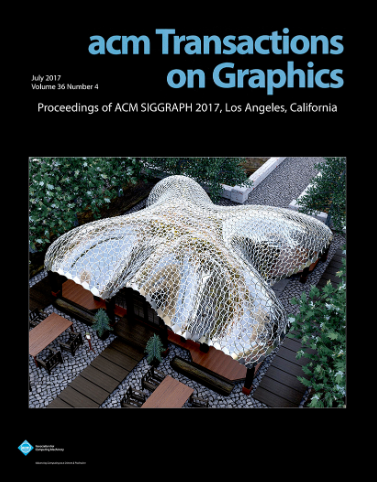夸克实时、高分辨率和通用神经视图合成
IF 9.5
1区 计算机科学
Q1 COMPUTER SCIENCE, SOFTWARE ENGINEERING
引用次数: 0
摘要
我们介绍了一种用于进行高质量、高分辨率、实时新视角合成的新型神经算法。从一组稀疏的输入 RGB 图像或视频流中,我们的网络既能重建三维场景,又能在英伟达 A100 上以 30fps 的 1080p 分辨率渲染新视图。我们的前馈网络可通用于各种数据集和场景,并为实时方法提供最先进的质量。我们的质量接近并在某些情况下超过了一些顶级离线方法的质量。为了取得这些成果,我们采用了几种关键概念的新颖组合,并将它们结合在一起,形成了一种具有凝聚力的有效算法。我们借鉴了以往使用半透明图层表示场景的方法,并使用迭代学习渲染-精修方法来改进这些图层。我们的方法不使用平面图层,而是重建分层深度图 (LDM),从而有效地表现具有复杂深度和遮挡的场景。迭代更新步骤被嵌入到多尺度、UNet 风格的架构中,以便在降低分辨率的情况下执行尽可能多的计算。在每个更新步骤中,为了更好地汇总来自多个输入视图的信息,我们使用了基于变换器的专用网络组件。这样就可以在输入图像空间(而不是图层空间)执行大部分的每次输入图像处理,从而进一步提高效率。最后,由于我们重建和渲染的实时性,我们为每一帧动态创建和丢弃内部三维几何图形,为每个视图生成 LDM。综上所述,这就产生了一种新颖有效的视图合成算法。通过广泛的评估,我们证明了我们能以实时速率实现最先进的质量。本文章由计算机程序翻译,如有差异,请以英文原文为准。
Quark: Real-time, High-resolution, and General Neural View Synthesis
We present a novel neural algorithm for performing high-quality, highresolution, real-time novel view synthesis. From a sparse set of input RGB images or videos streams, our network both reconstructs the 3D scene and renders novel views at 1080p resolution at 30fps on an NVIDIA A100. Our feed-forward network generalizes across a wide variety of datasets and scenes and produces state-of-the-art quality for a real-time method. Our quality approaches, and in some cases surpasses, the quality of some of the top offline methods. In order to achieve these results we use a novel combination of several key concepts, and tie them together into a cohesive and effective algorithm. We build on previous works that represent the scene using semi-transparent layers and use an iterative learned render-and-refine approach to improve those layers. Instead of flat layers, our method reconstructs layered depth maps (LDMs) that efficiently represent scenes with complex depth and occlusions. The iterative update steps are embedded in a multi-scale, UNet-style architecture to perform as much compute as possible at reduced resolution. Within each update step, to better aggregate the information from multiple input views, we use a specialized Transformer-based network component. This allows the majority of the per-input image processing to be performed in the input image space, as opposed to layer space, further increasing efficiency. Finally, due to the real-time nature of our reconstruction and rendering, we dynamically create and discard the internal 3D geometry for each frame, generating the LDM for each view. Taken together, this produces a novel and effective algorithm for view synthesis. Through extensive evaluation, we demonstrate that we achieve state-of-the-art quality at real-time rates.
求助全文
通过发布文献求助,成功后即可免费获取论文全文。
去求助
来源期刊

ACM Transactions on Graphics
工程技术-计算机:软件工程
CiteScore
14.30
自引率
25.80%
发文量
193
审稿时长
12 months
期刊介绍:
ACM Transactions on Graphics (TOG) is a peer-reviewed scientific journal that aims to disseminate the latest findings of note in the field of computer graphics. It has been published since 1982 by the Association for Computing Machinery. Starting in 2003, all papers accepted for presentation at the annual SIGGRAPH conference are printed in a special summer issue of the journal.
 求助内容:
求助内容: 应助结果提醒方式:
应助结果提醒方式:


